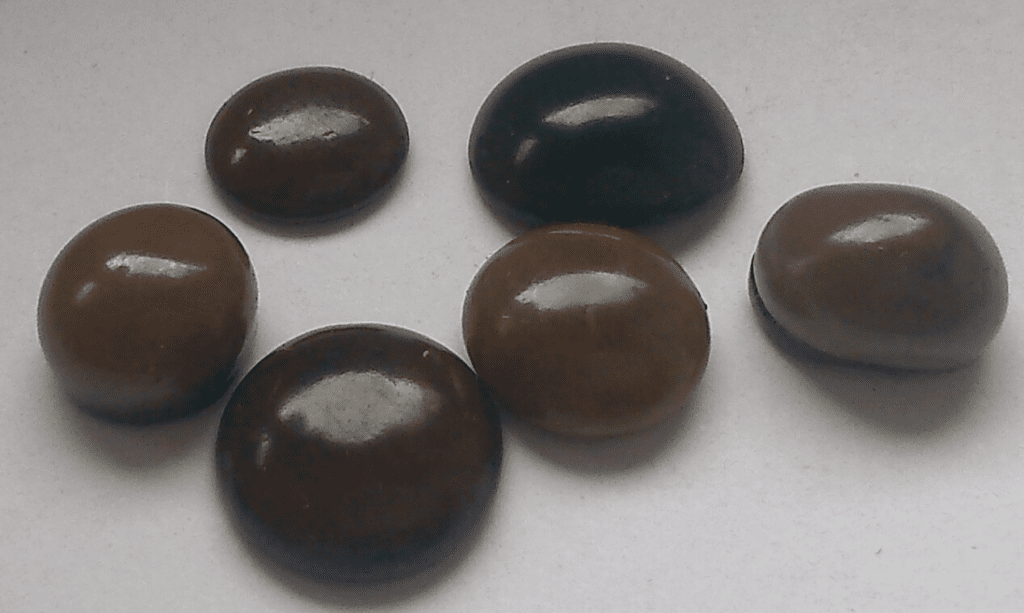

The toadstone, also known as bufonite (from Latin bufo, “toad”), is a mythical stone or gem that was thought to be found in the head of a toad. It was supposed to be an antidote to poison and in this it is like batrachite, supposedly formed in the heads of frogs. Toadstones were actually the button-like fossilised teeth of Lepidotes, an extinct genus of ray-finned fish from the Jurassic and Cretaceous periods. They appeared to be “stones that are perfect in form” and were set by European jewellers into magical rings and amulets from Medieval times until the 18th century.
- “Fossils: myths, mystery and magic”. Independent UK. 12 February 2007. Archived from the original on 27 April 2008. Retrieved 13 April 2008.
Beliefs
From ancient times people associated the fossils with jewels that were set inside the heads of toads. The toad has poison glands in its skin, so it was naturally assumed that they carried their own antidote and that this took the form of a magical stone. They were first recorded by Pliny the Elder in the first century.
According to Paul Taylor of the London Natural History Museum:
Like tonguestones, toadstones were considered to be antidotes for poison and were also used in the treatment of epilepsy“. As early as the 14th century, people began to adorn jewelry with toadstones for their magical abilities. In their folklore, a toadstone was required to be removed from an old toad while the creature was still alive, and as instructed by the 17th century naturalist Edward Topsell, could be done by setting the toad on a piece of red cloth.


The true toadstone was taken by contemporary jewellers to be no bigger than the nail of a hand and they varied in colour from a whitish brown through green to black, depending on where they were buried.
- Thomas, Nicols (1652). “xxxvi”. A Lapidary, Or, the History of Pretious Stones: With Cautions for the Undeceiving of All Those That Deal With Pretious Stones. Vol. II. Thomas Buck. pp. 158–159. OCLC 8187470.
They were supposedly most effective against poison when worn against the skin, on which occasion they were thought to heat up, sweat and change colour.
- Scribonius, Adolf Wilhelm (1631). Naturall Philosophy: or a Description of the Vvorld, and of the Severall Creatures Therein Contained. Tho. Cotes, for Iohn Bellamie. OCLC 216883672.
If a person were bitten by a venomous creature a toadstone would be touched against the affected part to effect a cure.
- Thomas, Lupton (1576). A Thousand Notable Things, of Sundry Sortes: Whereof Some Are Wonderfull, Some Straunge, Some Pleasant, Diuers Necessary, a Great Sort Profitable, and Many Very Precious. Imprinted for Edward White. OCLC 1127498887.
Alternatively Johannes de Cuba, in his book Gart der Gesundheit of 1485, claimed that toadstone would help with kidney disease and earthly happiness.
- Campbell, Marian (2009). Medieval Jewellery in Europe 1100-1500. V&A Publishing. p. 33. ISBN 9781851775828.
Loose toadstones were discovered among other gemstones in the Elizabethan Cheapside Hoard and there are surviving toadstone rings in the Ashmolean Museum and the British Museum.
Allusions in literature
The toadstone is alluded to by Duke Senior in Shakespeare’s As You Like It (1599), in Act 2, Scene 1, lines 12 to 14:
Sweet are the uses of adversity;
Which, like the toad, ugly and venomous,
Wears yet a precious jewel in his head.
In James Branch Cabell‘s short story “Balthazar’s Daughter” (collected in The Certain Hour) and its subsequent play adaptation The Jewel Merchants, Alessandro de Medici attempts to seduce Graciosa by listing various precious jewels in his possession, including “jewels cut from the brain of a toad”.
See also
References
- “Fossils: myths, mystery and magic”. Independent UK. 12 February 2007. Archived from the original on 27 April 2008. Retrieved 13 April 2008.
- Thomas, Nicols (1652). “xxxvi”. A Lapidary, Or, the History of Pretious Stones: With Cautions for the Undeceiving of All Those That Deal With Pretious Stones. Vol. II. Thomas Buck. pp. 158–159. OCLC 8187470.
- Scribonius, Adolf Wilhelm (1631). Naturall Philosophy: or a Description of the Vvorld, and of the Severall Creatures Therein Contained. Tho. Cotes, for Iohn Bellamie. OCLC 216883672.
- Thomas, Lupton (1576). A Thousand Notable Things, of Sundry Sortes: Whereof Some Are Wonderfull, Some Straunge, Some Pleasant, Diuers Necessary, a Great Sort Profitable, and Many Very Precious. Imprinted for Edward White. OCLC 1127498887.
- Campbell, Marian (2009). Medieval Jewellery in Europe 1100-1500. V&A Publishing. p. 33. ISBN 9781851775828.
Further reading
- New Oxford American Dictionary, under the entry “toadstone”.
- The Complete Works of William Shakespeare by Crown Publishers Inc
External links
- “Toadstones: A note to Pseudodoxia Epidemica, Book III, chapter 13″
- A collection of notes maintained by James Eason of the University of Chicago comprising excerpts from Thomas Nicols and other authors
- New York Times reference, October 1890
- Whitehurst, John (1713-1788). An inquiry into the original state and formation of the earth, pp 184-5, 190 and ff).


